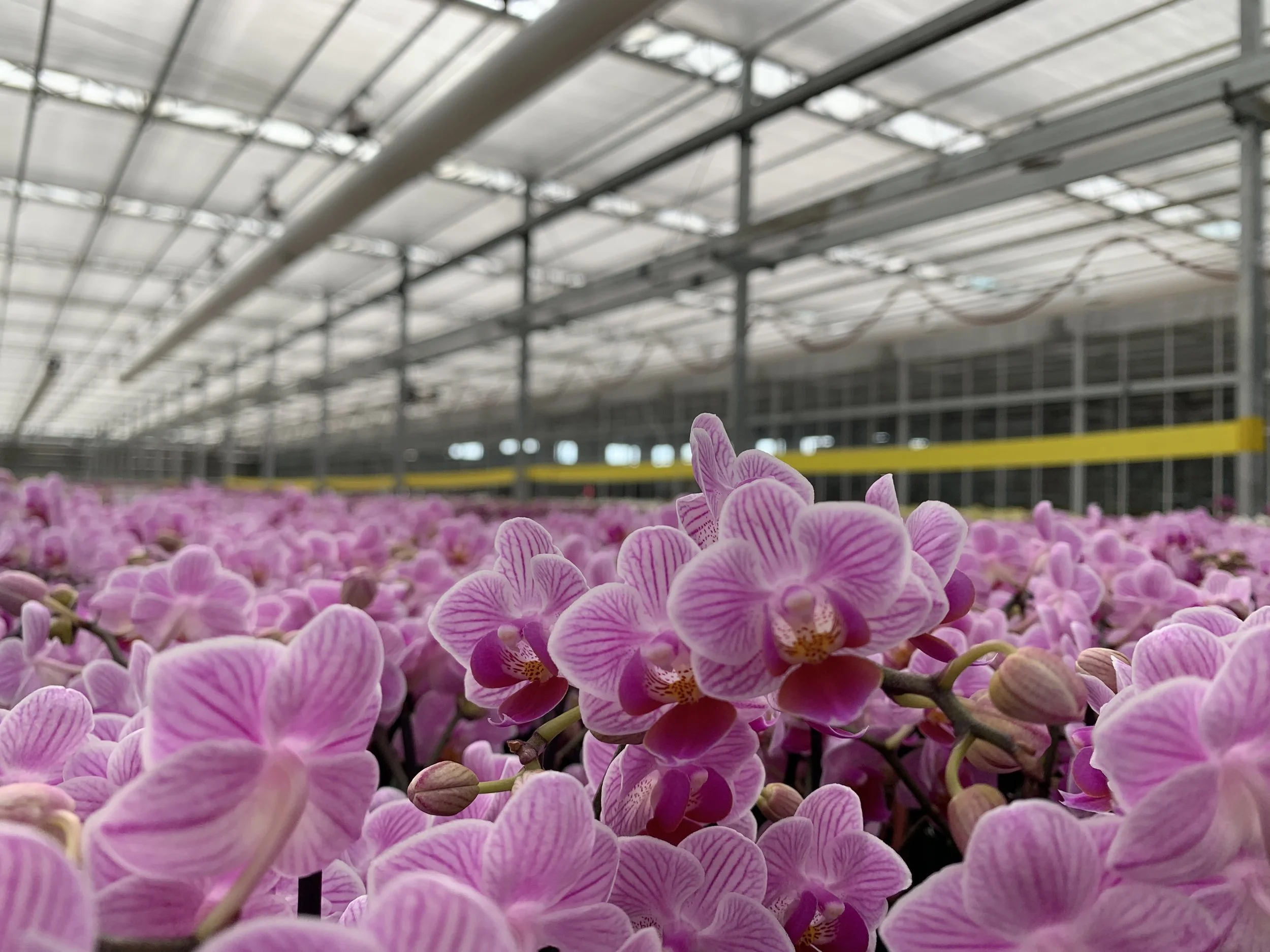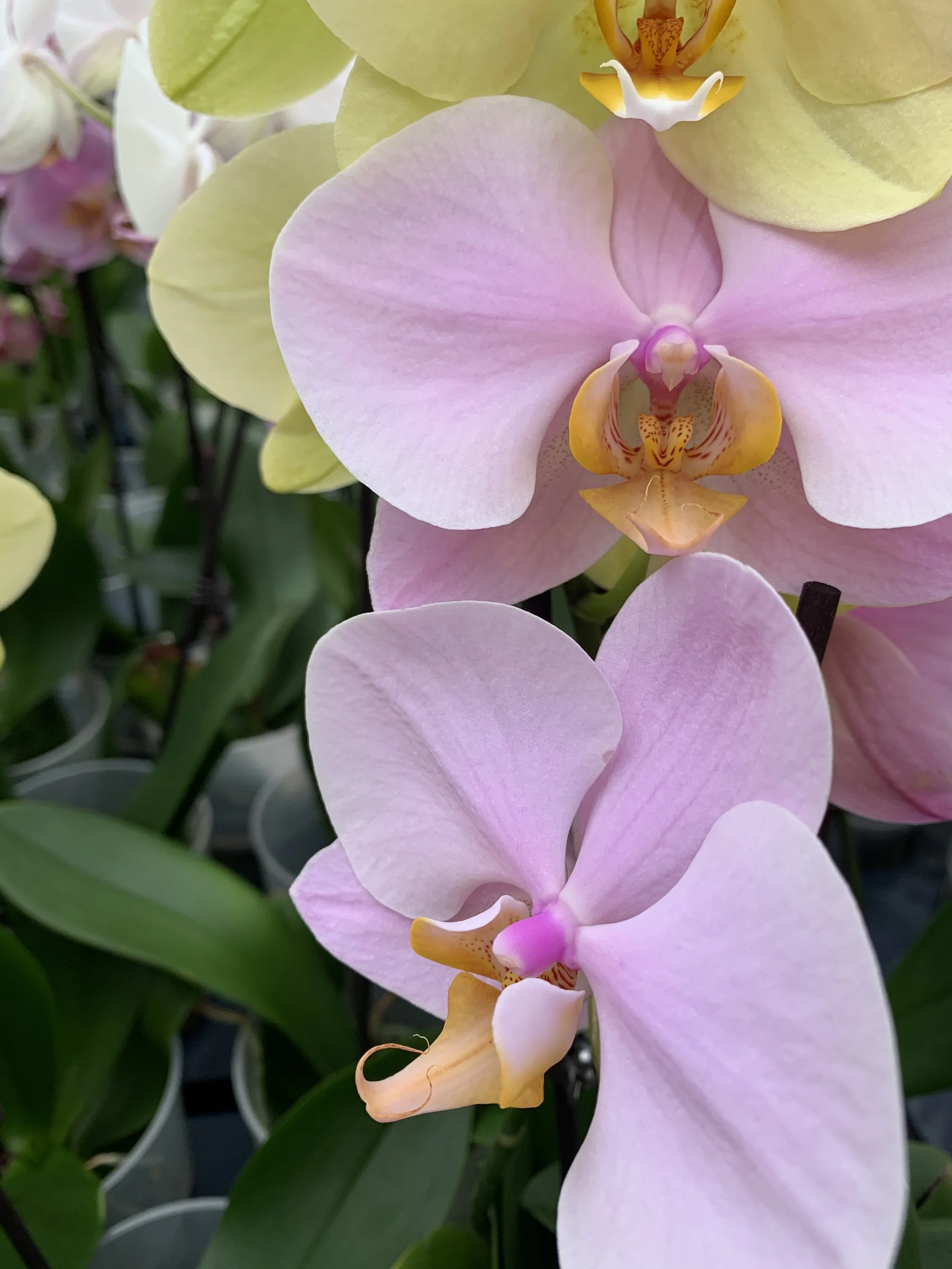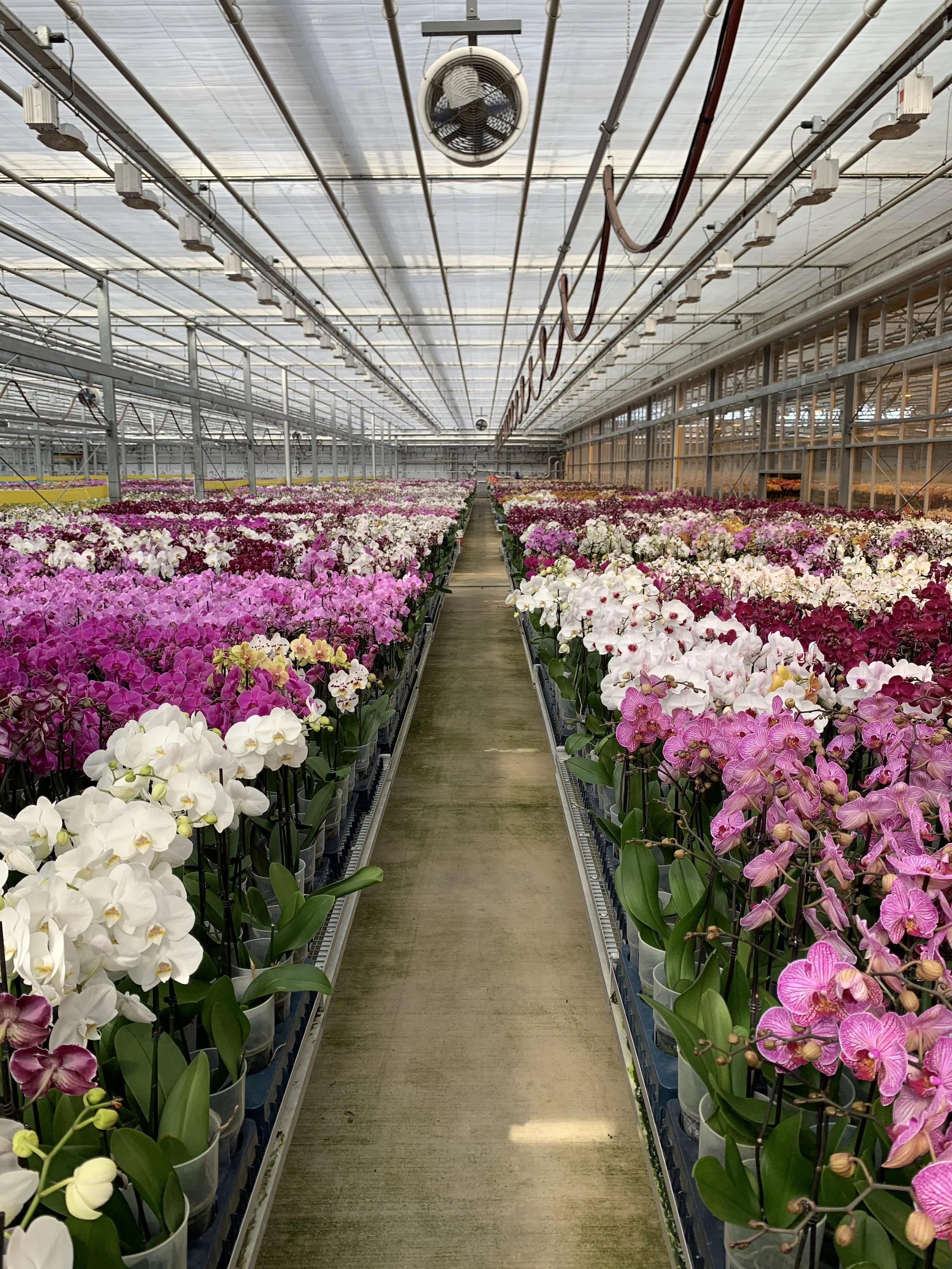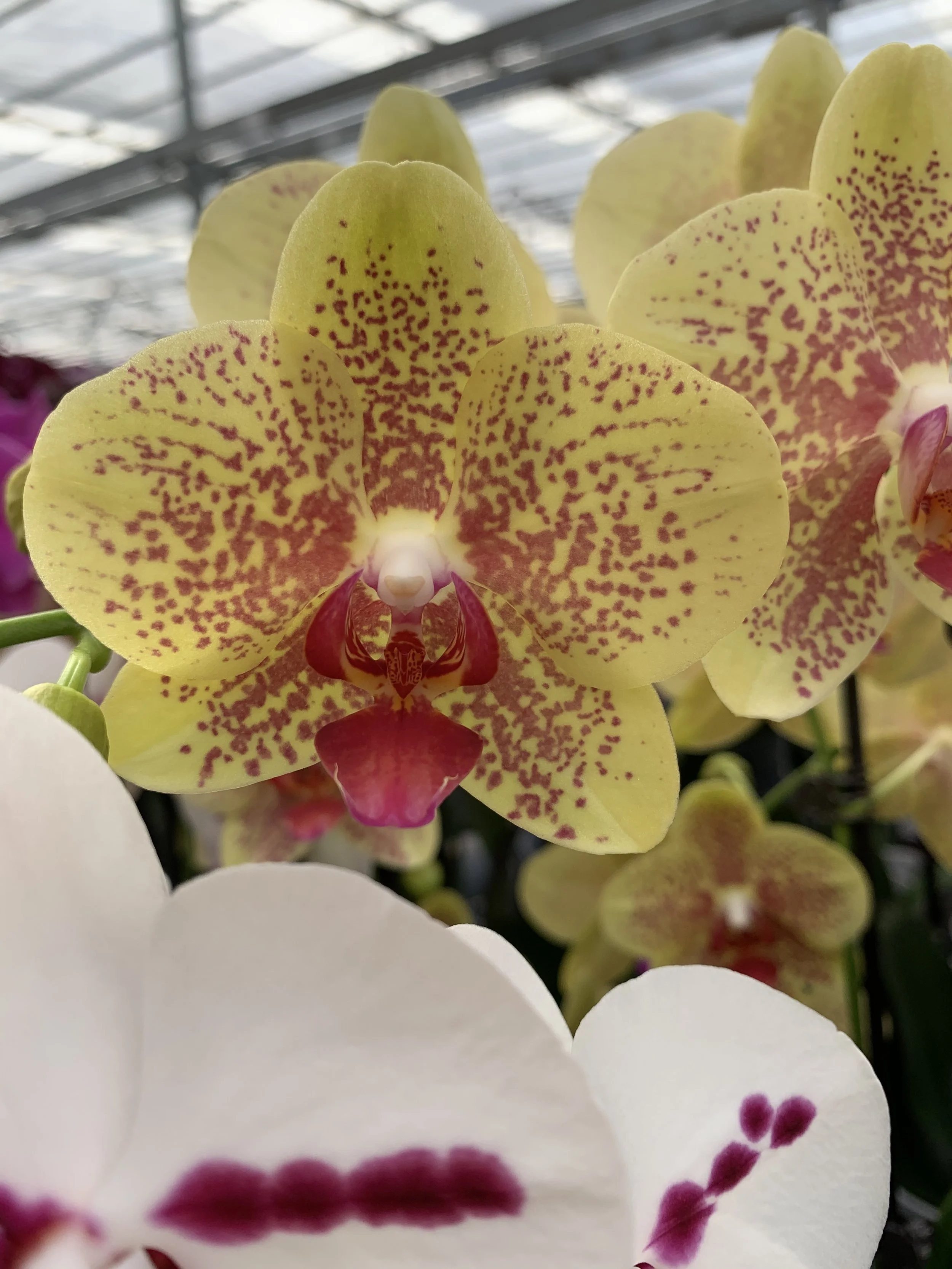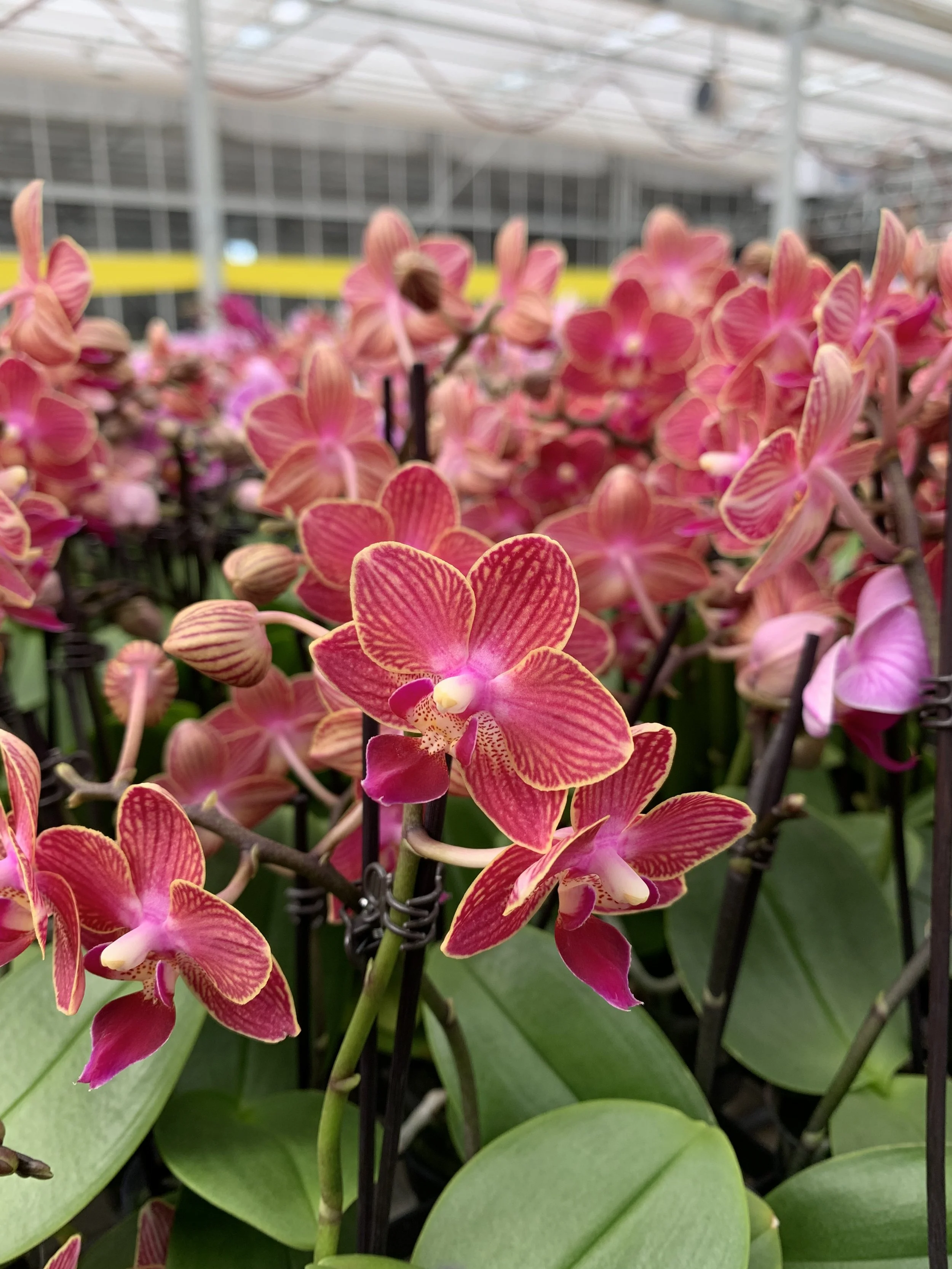MOTH ORCHID
Phalaenopsis hybrids
Family Orchidaceae
-
Light: Bright, indirect light is best to avoid leaf scorch but to promote flowering.
Temperature: Generally speaking, Phalaenopsis hybrids can tolerate a wide range of temperatures between 50 & 95 degrees depending on the hybrid. However, they prefer cool nights and warm days. Windows, corner rooms, porches or greenhouses that fluctuate more in temperatures are great places to keep these guys.
65-70 F Nights
75-85 F Days
Humidity: Orchids always perform better the higher you can keep humidity; but Phalaenopsis can tolerate lower humidity in more temperate conditions.
Low humidity causes leaf tip burn and curled leaves, bud loss and faster dry down in root zone.
-
Water: Phalaenopsis are generally thought to be the most tolerant orchid for home growers because they can tolerate dry conditions. Allow bark to dry thoroughly between watering.
Water when roots appear silver in color by soaking the root ball for 5 minutes or by running water over the roots until thoroughly wet and dark green in color. Avoid wetting leaves and getting water in the central growing point to avoid crown decay.
Adjust seasonally. You may water every 1-2 weeks in summer months and every 2-4 weeks in winter months.
Repotting: Repott every 2-3 years as roots fill majority of pot. To learn more about potting them up, read the American Orchid Society’s care guide by clicking here.
Fertilizing: Use a 30-10-10 formulation applied every other watering when not in flower. This will support leafy growth.
If desired, you can fertilize during open bloom with a high phosphorous ratio fertilizer such as 10-30-20.
-
Orchids have a vast and complicated taxonomy that most cannot dissect. To learn more about orchid care, join your local orchid society chapter!
-
(Listed in order of commonality…)
Lack of flowers from low light or from inadequate cool period
Root/Crown decay caused by overwatering and leaf wetness
Fungus gnats
Algae build-up on potting mix
Mealy Bugs
-
Are orchids pet safe?
Yes; generally speaking, most orchids are regarded safe for pets. Phalaenopsis have specifically been tested as safe.
How do I get Phalaenopsis to rebloom?
Phalaenopsis bloom after about a month of cooler nights. Place in a window or corner room during winter months to drop night temperatures 5-10 degrees to trigger a new flower spike. Check out my Unearth Horticulture episode on the topic by clicking here!
More Resources
Learn more from experts in the orchid trade.
Did you know I published a study on orchid root health? Nerd out with me by clicking below.
Related Videos
Learn about the science of nodes and how to re-bloom your Phalaenopsis orchid like the canny horticulturist that you are.
Learn about flower morphology (a.k.a. the study of a flower’s physical characteristics). Phalaenopsis orchids are included in this video!
Cultivars & Species
Have a more specific question?
I’m just a few clicks away.

